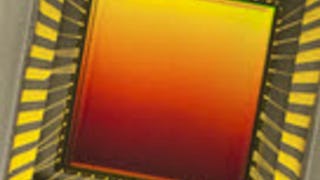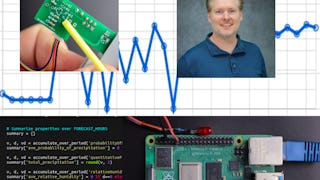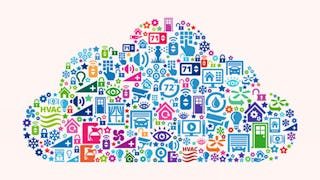This course on integrating sensors with your Raspberry Pi is course 3 of a Coursera Specialization and can be taken separately or as part of the specialization. Although some material and explanations from the prior two courses are used, this course largely assumes no prior experience with sensors or data processing other than ideas about your own projects and an interest in building projects with sensors.

Enjoy unlimited growth with a year of Coursera Plus for $199 (regularly $399). Save now.

Using Sensors With Your Raspberry Pi
This course is part of Raspberry Pi Projects Specialization

Instructor: Drew Wilson
2,153 already enrolled
Included with
(11 reviews)
Skills you'll gain
Details to know

Add to your LinkedIn profile
4 assignments
See how employees at top companies are mastering in-demand skills

Build your subject-matter expertise
- Learn new concepts from industry experts
- Gain a foundational understanding of a subject or tool
- Develop job-relevant skills with hands-on projects
- Earn a shareable career certificate

There are 4 modules in this course
This first module gets us all on the same page, no matter how much experience you have with sensors or measurement technology. We'll start by describing a straightforward sensor flow model to help us understand the myriad of sensors available in the world, and which you may later build. Then we'll move into the concepts of accuracy, precision, and uncertainty, which are necessary for understanding the inherent error in any measurement system. This module lays the groundwork for the circuits and examples in later modules.
What's included
8 videos1 assignment
In this module, we'll look at examples of three common methods to store calibration data and apply that data to your sensor measurements. These examples range from simple to sophisticated, but none are complicated. We'll use Python and advanced open-source libraries to do the heavy math, just like you can implement in your Raspberry Pi projects.
What's included
10 videos1 assignment
Once you have a sensor, and have a Raspberry Pi, there is often a need for circuitry in the middle to interface the two. In this module, we'll show how simple amplifier and filter circuits can be used to adapt voltage levels and reduce noise from your sensor data.
What's included
9 videos1 assignment
The great thing about using a Raspberry Pi for your sensor projects is that you have access to great open-source software libraries and lots of processing power to manipulate your sensor data. This module looks at a few techniques for using statistical and digital signal processing methods to clean up your sensor data.
What's included
6 videos1 assignment
Earn a career certificate
Add this credential to your LinkedIn profile, resume, or CV. Share it on social media and in your performance review.
Instructor

Offered by
Explore more from Electrical Engineering
 Status: Free Trial
Status: Free TrialUniversity of California, Irvine
 Status: Free Trial
Status: Free TrialJohns Hopkins University

University of California San Diego
 Status: Free Trial
Status: Free TrialJohns Hopkins University
Why people choose Coursera for their career





Open new doors with Coursera Plus
Unlimited access to 10,000+ world-class courses, hands-on projects, and job-ready certificate programs - all included in your subscription
Advance your career with an online degree
Earn a degree from world-class universities - 100% online
Join over 3,400 global companies that choose Coursera for Business
Upskill your employees to excel in the digital economy
Frequently asked questions
To access the course materials, assignments and to earn a Certificate, you will need to purchase the Certificate experience when you enroll in a course. You can try a Free Trial instead, or apply for Financial Aid. The course may offer 'Full Course, No Certificate' instead. This option lets you see all course materials, submit required assessments, and get a final grade. This also means that you will not be able to purchase a Certificate experience.
When you enroll in the course, you get access to all of the courses in the Specialization, and you earn a certificate when you complete the work. Your electronic Certificate will be added to your Accomplishments page - from there, you can print your Certificate or add it to your LinkedIn profile.
Yes. In select learning programs, you can apply for financial aid or a scholarship if you can’t afford the enrollment fee. If fin aid or scholarship is available for your learning program selection, you’ll find a link to apply on the description page.
More questions
Financial aid available,

